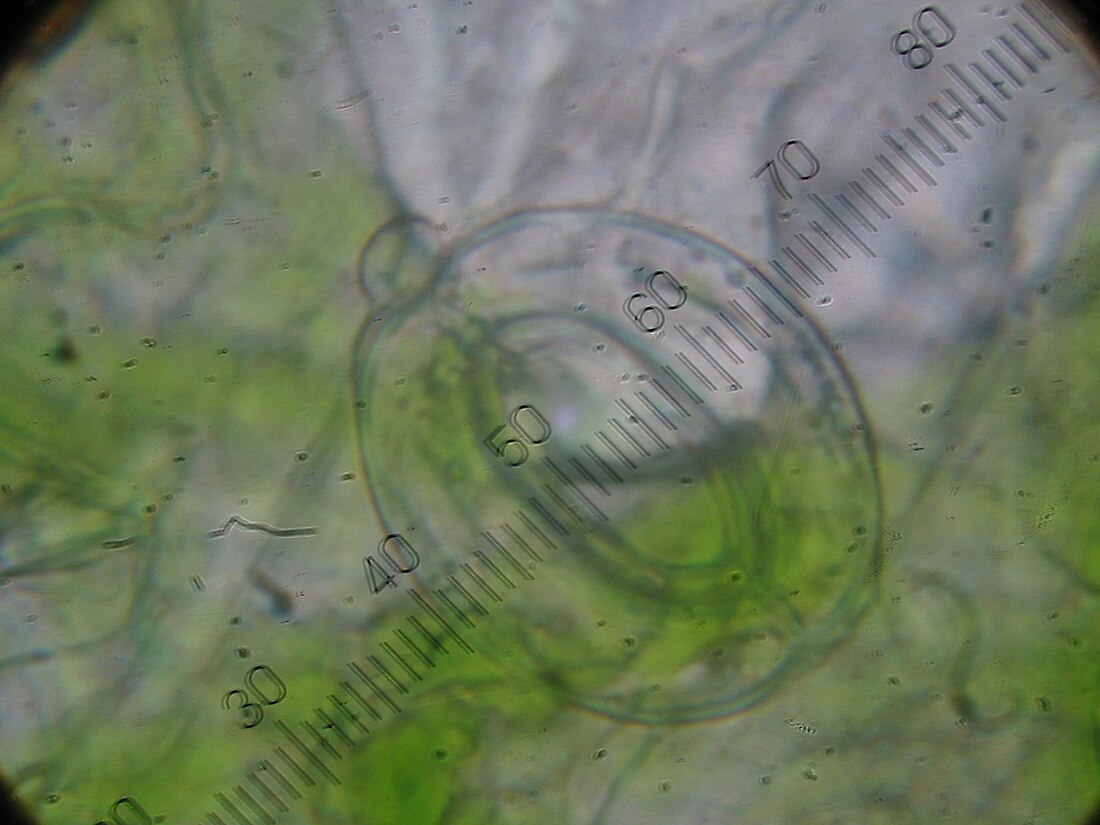Stomata
closable pore in the surface of a plant's leaf or other aerial organ allowing the exchange of gases between tissues and the atmosphere From Wikipedia, the free encyclopedia
Remove ads
In botany, a stoma (plural = stomata) is a tiny opening or pore. It is found on plant leaves and stems, and any other green parts of the plant. It is used for gas exchange. Stomata are mostly found on the under-surface of plant leaves.[1] all plants have stomata.


Stomata have two main functions. First is gaseous exchange i.e. intake of carbon dioxide and release of oxygen. The second is the process of transpiration in plants.
Air enters the plant through these openings. The carbon dioxide is used in photosynthesis, which also produces oxygen. The plant uses some of the oxygen but the rest is waste that exits through these same openings. Also, water vapor goes into the atmosphere through these pores in transpiration.
The pore is formed by a pair of cells known as guard cells. These adjust the size of the opening by opening or closing. To open a guard cell, protons (hydrogen ions, H+) are pumped into the guard cells. Water enters into them, the cells gets filled, and they open.
Remove ads
References
Wikiwand - on
Seamless Wikipedia browsing. On steroids.
Remove ads
